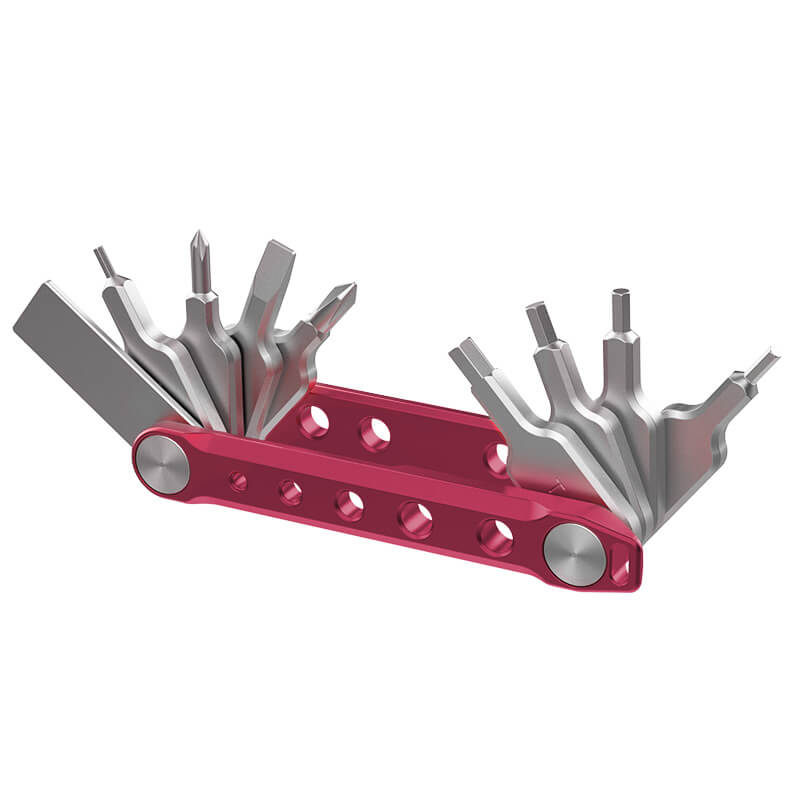Vlogging, or video blogging, has become an extremely popular way for people to share their lives online. Unlike old-school text blogs, vlogs use videos to showcase daily activities, adventures, interests, and more. As video creation technology has continued to advance, vlogging's popularity has exploded on platforms like YouTube, Instagram, and TikTok.
To create engaging vlogs, there are some essential pieces of equipment that can significantly improve the quality and clarity of your videos. This is where the Vlogging Kit comes in—a set of essential pieces of equipment that makes producing great vlogs much easier. A good vlogging kit contains tools that help you capture smooth footage, capture clear sound, and perfectly light yourself or others. With the right vlogging kit components, you can upgrade your videos from amateur home videos to professional-looking vlog productions.
Exactly what equipment you need depends on your budget and the type of vlogging you want to do. In this article, we'll cover some of the essential items for vlogging equipment, from cameras to microphones to editing software. We'll also give you tips on choosing the best equipment for your needs so you can start your vlogging journey off right. Let's dive in!

What exactly is a vlogging kit?
A vlogging kit is a collection of equipment and accessories for producing video content for vlogging. Essentially, a vlogging kit allows you to record, dub, stabilize, and light yourself or your subjects to create compelling video blogs.
In detail, a vlogging kit usually contains the following:
- Camera: The central device for capturing high-quality video footage. DSLR, mirrorless, point-and-shoot, and smartphone cameras are common options.
- Microphone: An external microphone used for professional audio recordings with crystal-clear sound. Shotgun, lavalier, and USB microphones are very popular.
- Lighting: Equipment for optimal lighting in any environment, such as ring lights, softboxes and LED panels.
- Stabilizers: Tools such as gimbals, tripods and camera straps to achieve smooth, jerk-free movements in the recordings.
- Editing software: Applications for combining footage, audio, and graphics into an edited vlog. For example, iMovie or Final Cut Pro.
Additional accessories such as lenses, backdrops, and drones can complement the core components of the vlogging kit mentioned above. With the right equipment, you can showcase your life and personality through well-produced vlog content. The vlogging kit is the modern update of the television studio—it offers everything you need for professional video production at home or on the go!

Choosing the right camera for vlogging
The most important component of any vlogging kit is the camera you use to record your videos. There are several different types of cameras, each with its own advantages and disadvantages. When choosing the right camera, you'll need to consider factors like video quality, portability, controls, and ease of use. This section provides an overview of the most popular vlogging cameras and tips for choosing the best one for your budget and needs.
DSLR cameras
DSLR cameras (digital single-lens reflex cameras) offer excellent image quality, controls, and interchangeable lenses. A large image sensor enables cinematic video recording, excellent low-light performance, and the ability to achieve sharp focus and blurred artistic backgrounds. However, DSLRs are generally more complex and require time to learn manual settings. They are also heavier and less portable for everyday vlogging. DSLRs like the Canon 80D offer excellent quality but may be too complicated for vlogging beginners.
Mirrorless cameras
Mirrorless cameras are a lighter and more compact alternative to DSLRs, while retaining large sensors and interchangeable lenses. By eliminating the mirror mechanism, mirrorless models can significantly reduce both size and weight. The Sony a6400 and Panasonic Lumix G85 are excellent mirrorless models capable of shooting professional-level 4K video in a highly portable form factor. For travel vlogging and everyday videography, mirrorless cameras offer an optimal balance of quality, controls, and portability.
Point-and-shoot cameras
Point-and-shoot cameras are the pinnacle of simplicity and compactness. Intuitive controls and presets allow you to pick them up and start shooting immediately. However, smaller sensors result in poorer low-light performance, lower resolutions, and fewer controls than DSLRs or mirrorless cameras. Vloggers have to work with more limited features. But for beginners, their simplicity and price make them an attractive entry-level option.
Smartphone cameras
Chances are you already have a capable camera in your pocket. Today's smartphone cameras are shockingly good, especially on flagship phones. Smartphone vlogging offers unbeatable convenience and portability. However, there are limitations in video quality, stabilization, focus, and audio. With a little care and some additional equipment, you can achieve appealing results with smartphone vlogging.

Tips for choosing a vlogging camera
When choosing a vlogging camera, consider video resolution, sensor size, mobility needs, budget, and ease of use. Consider smooth stabilization and audio connectivity. While vlogging is possible with a smartphone or a simple camera, investing in a DSLR or mirrorless camera will pay off with professional quality and creative control. Find the best balance for your needs and let your vlogging begin!
First-class audio recordings with microphones
High-quality audio is essential for an engaging vlogging experience. The small built-in microphones in cameras are often incapable of capturing clear, clean sound. Investing in an external microphone can drastically improve the sound of your vlog. Here are the top options and tips for choosing the right microphone.
Built-in camera microphone
Almost every camera has a built-in omnidirectional microphone for easy audio recording. However, built-in microphones easily pick up ambient noise and struggle to isolate the vlogger's voice. The distance from the microphone also affects volume and clarity. For better sound, an external microphone is recommended.
External microphones
Connecting an external microphone allows you to capture audio that's perfectly aligned with the camera video. Directional microphones isolate the desired sound source and reduce distracting background noise. Common options include:
- Shotgun microphones: Unidirectional microphone suitable for narration, interviews and events
- Lavalier/lapel microphones: Clip-on microphones that enable clear voice recording and hands-free operation
- USB microphones: Versatile studio microphone with direct computer connection for easy editing
Choosing an external vlogging microphone
When choosing an external microphone, consider the situation, your need for mobility, your budget, and your connectivity options. Lavalier microphones are great for talking-head videos. Shotgun microphones are suitable for on-the-go vlogging. USB studio microphones are well-suited for voiceovers and stationary setups. High-quality audio enhances the overall vlogging experience.

Basic lighting for flattering looks on camera

The right lighting can have a decisive impact on the visual impact of a vlog. High-quality lighting flatters the subject, whether it's you or the person(s) you're photographing. Here are some essential lighting products and tips for optimal exposure:
RGB LED video light
An RGB LED light panel allows you to adjust the hue and intensity to suit the scene. Mix red, green, and blue light spectrums to create vibrant or natural-looking lighting. With RGB lighting, you have control over the mood you want to create.
Magnetic LED tube light
This versatile LED fluorescent tube adheres to metal surfaces thanks to built-in magnets. It can be flexibly attached to appliances, shelves, or other objects to create directional light. Powered by batteries or USB.
Softbox
A softbox is mounted on a tripod above the camera to diffuse and soften harsh light, creating a flattering, wrap-around light effect on your face. Softboxes eliminate harsh shadows and bright hotspots.
Adjustable light stand
A light stand with an adjustable arm allows you to easily raise, lower, or adjust the lighting as needed. Stable feet prevent tipping and make it easier to position the lighting where you want it.
Lighting tips
Experiment with dimming and positioning these lighting products for optimal exposure. Use tripods and mounts to influence direction and intensity. Mix the color temperatures of the lights to balance the tones of the scene. Finding the right lighting for your vlog will require some experimentation, but it's worth the effort!
Securing recordings with stable tripods
A sturdy tripod is an essential element of any vlogging equipmentto ensure blur-free shots. If you're filming yourself while standing, a reliable tripod will keep the camera stable.Here are some excellent, sturdy tripods:

360° rotatable phone/iPad stand holder
This premium tripod stand features thick padding and an all-metal construction to securely hold devices ranging from 4 to 13 inches, such as iPads and larger smartphones. It allows full 360-degree rotation for flexible portrait or landscape orientation.
Extendable vlog tripod
Perfect for selfies or vlogging on the go, this lightweight yet sturdy tripod extends from a compact height to a height of over one meter. It conveniently folds away and features a built-in phone holder and height adjustment for selfie or group shots.
Ring light tripod kit
Equip your vlog with this pair of ring lights, featuring 8-inch LED rings, tabletop stands with phone mounts, and wireless remote controls. Three color temperature settings and ten brightness levels provide customizable, flattering illumination.
Carbon Fiber Quick Release Teleprompter Tripod
Take your production to the next level with this durable carbon fiber tripod, designed for teleprompters and mobile rigs up to 8 kg. The quick-release plate also accommodates a smartphone mount for ultimate filming versatility.
Experiment with different angles to fine-tune your vlogging kit tripod setup. A stable hold enables creativity, consistency, and professional shots.
Choosing video editing software
Raw vlog footage needs to be edited into a polished final video. While editing is complex, you can arrange clips, adjust colors and audio, add transitions and text, and much more. Beginners can start with the basic options.
- iMovie/Windows Movie Maker: User-friendly applications for basic editing
- Adobe Premiere Pro/Final Cut Pro: Advanced professional suites with full functionality
When choosing editing software, consider the learning curve, features, and budget. Online tutorials can help you expand your knowledge of both beginner and professional tools. Editing software will help you shape your vlog, enhance clips, and combine footage into an engaging video story worth sharing.
Summary
The essential components of a vlogging kit include a camera of your choice, an external microphone, lighting equipment, stabilization tools, and editing software. Create the best mix for your budget and vlogging style. Make sure you have good image and sound quality, smooth motion, and flattering lighting. While well-designed vlogging equipment is an investment, it will enable successful and satisfying content creation. Don't let limited equipment hold you back—once you master the basics, you can start vlogging right away and improve over time. What matters most are your ideas, your personality, and your passion. With the right tools, you can share your vlogging vision with the world.






